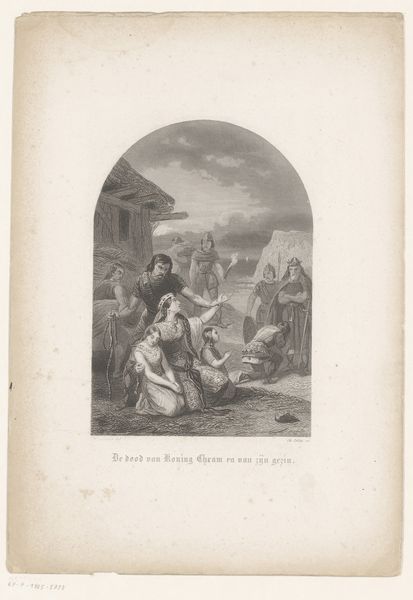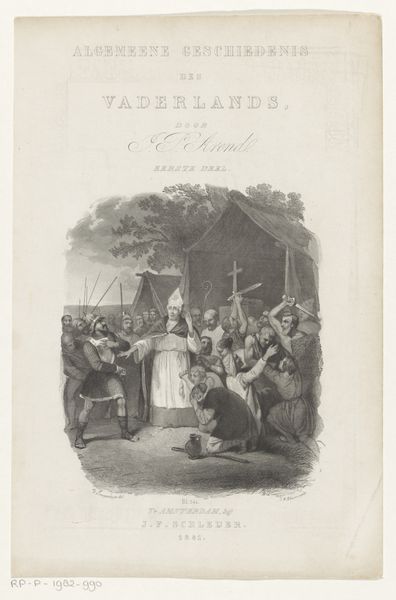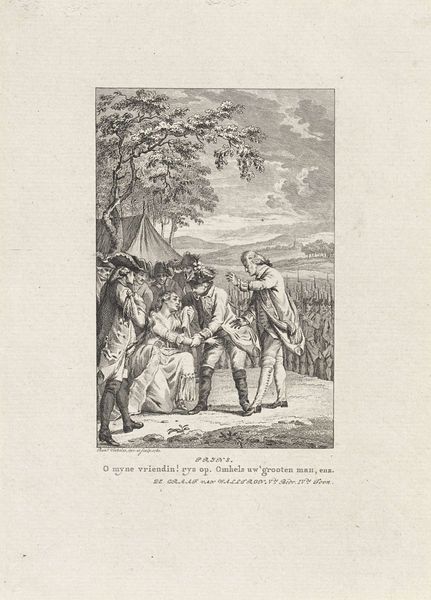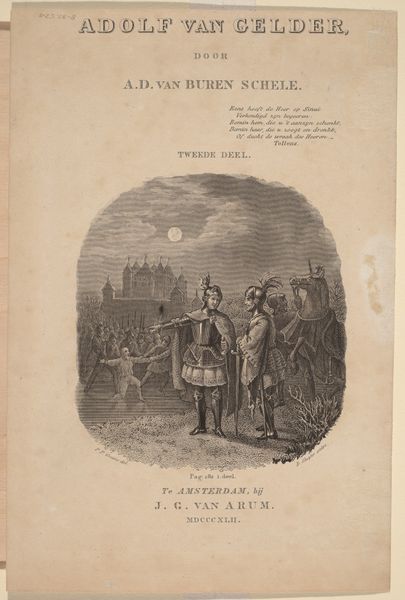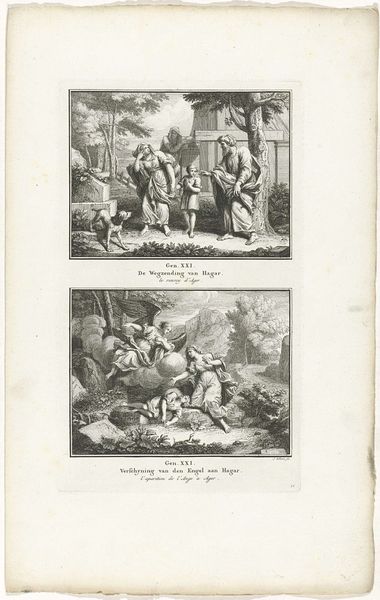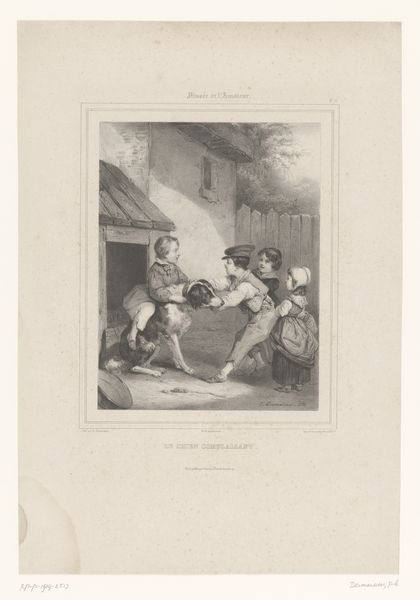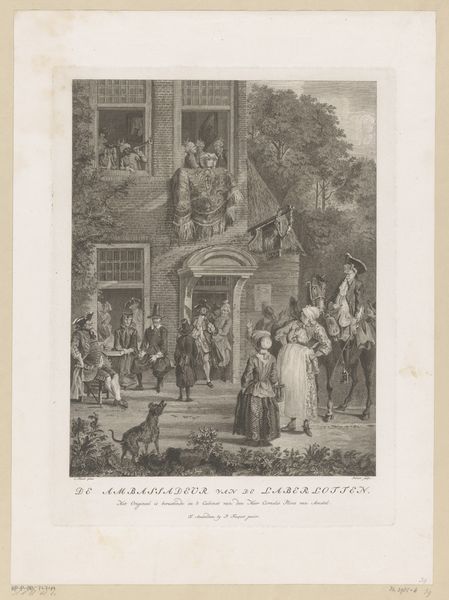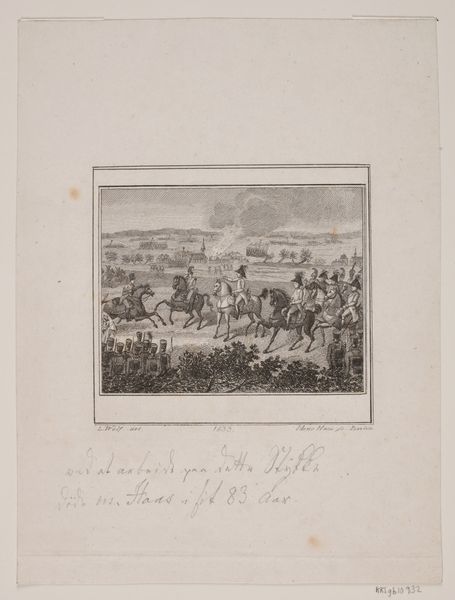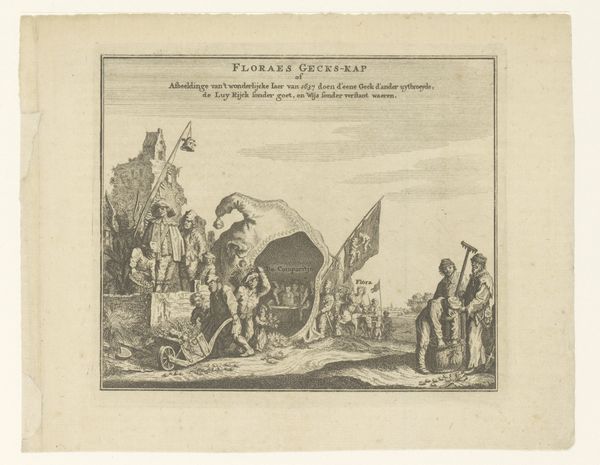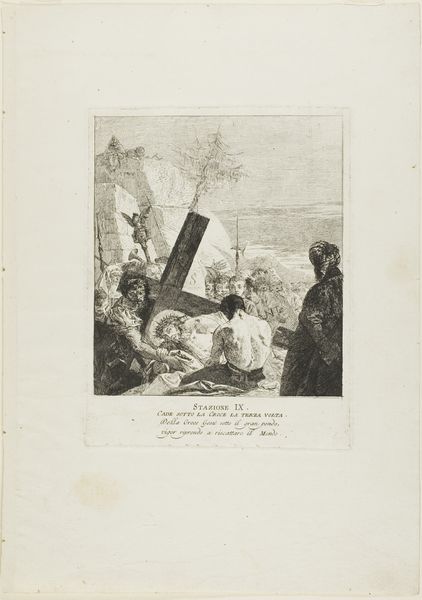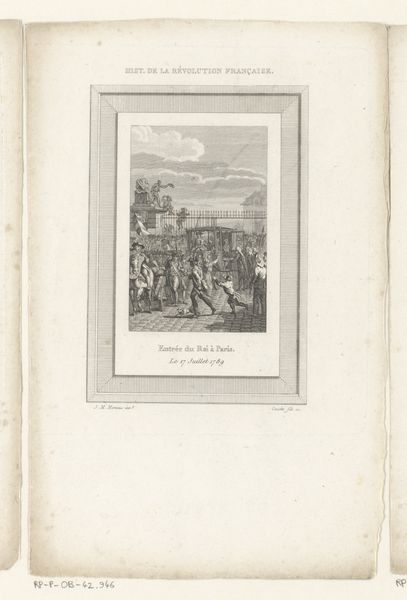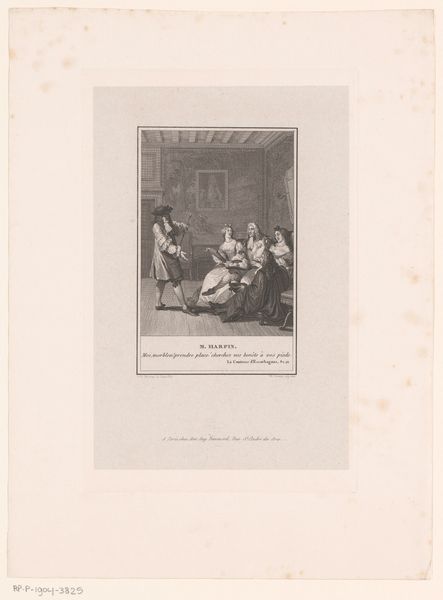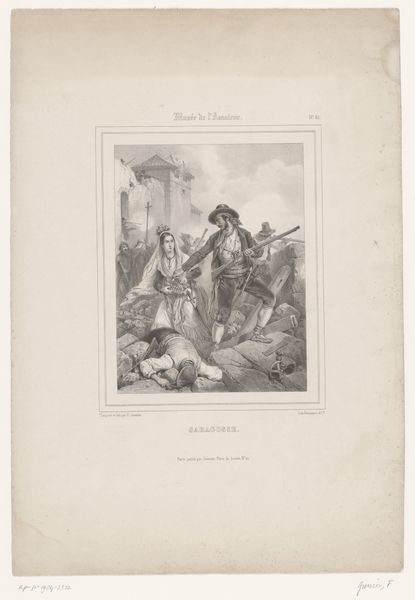
print, engraving
#
narrative-art
# print
#
figuration
#
romanticism
#
history-painting
#
engraving
Dimensions: height 235 mm, width 147 mm
Copyright: Rijks Museum: Open Domain
Curator: Let's turn our attention to "Ridder te paard voor kasteel," or "Knight on Horseback Before a Castle," an engraving by Johann Wilhelm Kaiser I, created in 1842. It resides here at the Rijksmuseum. Editor: My immediate reaction is how charged the atmosphere is, despite the limited grayscale palette. It conveys a sense of historical turbulence, something very dramatic is about to happen, wouldn’t you agree? Curator: Absolutely. Consider the romanticism in Kaiser’s piece; there’s a clear emphasis on emotional intensity through composition and light. We see this especially in the clustering of figures to the left. The linearity of the work really draws the eye to them, from the ground up, focusing attention to the key parts of the narrative. Editor: Right. Beyond just an aesthetic portrayal, consider the implied narrative about social hierarchies and conflict. Note the prostrate figure in the foreground – visually aligning with the knight, creating a statement on subjugation. This period saw heightened tensions relating to class, which is represented, perhaps unintentionally, with Kaiser’s arrangement. It resonates even now with social unrest and identity. Curator: It's intriguing how Kaiser, through the engraving process itself—a meticulous, linear art—manages to evoke a feeling of movement and disorder. The precise control necessary for engraving ironically creates an image of uncontrolled passion. This deliberate tension heightens the impact for me. Editor: But by overlooking its sociopolitical roots we risk missing vital interpretive layers. I find it's essential to consider how representations like these reinforce particular power dynamics of their era and onward. It reflects our continuing conversations today around representation and bias. Curator: I appreciate you emphasizing this dimension and how this engraving allows space for sociohistorical analyses and aesthetic valuation, something I’d admit to often avoiding. It truly captures a moment of transition, be it societal, personal, or both. Editor: Indeed, the depth and multifaceted nature of this simple print speaks volumes!
Comments
No comments
Be the first to comment and join the conversation on the ultimate creative platform.
